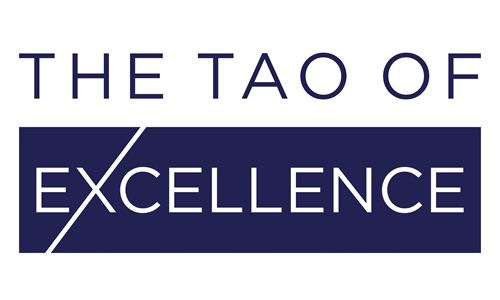The human mind is curious. It is our inquisitiveness that has led to some of humanity’s greatest discoveries. From fire to the apple that first sparked Newton’s theory of gravity, our curiosity has taken us to the moon and resolved many of our greatest challenges. As the writer and cognitive science professor Stephen Pinker notes in his book Enlightenment Now, today “We live longer, healthier, safer, wealthier, freer, more peaceful and more stimulating lives than those who came before us. And by “we” I don’t just mean we in the West. This progress is encompassing the world.”[1]
Our desire to discover and explore the world, often in the hope of improving the lives of others, is an extraordinary gift we’ve termed ‘progress’. Yet, for perhaps as long as there has been a drive to discover, we have been aware of a flipside. Whether through religion, proverbs—for ‘curiosity killed the cat’—or longstanding experience, we understand that the borders of what you may discover are unpredictable, and knowledge once known cannot be unlearnt. In this uncertainty there is always a degree of danger.
A deep dive into the atom for instance revealed both a huge source of energy and our deadliest bomb. It is this relationship, where ‘progress’ sits alongside the possibility of harmful or even deadly consequences, that perhaps best illustrates the balance between innovation and regulation in medtech. An industry that exists to enact directly upon us, to heal, save and improve lives.
Regulation provides the control that tempers the speed at which these ideas reach us. It controls the energy and direction of innovation and requires a standard of quality that protects our environment and the population. Yet interestingly, regulation also has the ability to work hand-in-hand with industry to support continuous innovation.
One such objective of regulation is to pave the way for a level playing field. This ensures the market transparency and competition required to increase quality, as well as keeping consumers well-informed of the product they intend to use.
The dual nature of regulation—one that controls and supports innovation—can be easily exampled in the automotive industry. There, market regulations set many safety requirements that now come as standard in today’s cars, such as seat belts and air bags etc., however, recent regulatory changes also force manufactures to innovate in order to reduce CO2 emissions that will protect our health and the environment.
In April 2019, the EU adopted Regulation 2019/631 to set CO2 emission performance standards and “incentivise the uptake of zero- and low-emission vehicles, in a technology-neutral way.” This update requires manufactures to think outside of the box. They must invest in innovation and create products that improve on existing technology in order to maintain their access to market and secure the future of their business.
For its 20th anniversary, the American Pharmaceutical Review published in October 2018 reflected on changes in the pharma industry over the past 20 years. From simple medicines to new stem cell therapies, experts described regulatory agencies as a force that actively supports the industry to “adapt [its] modern technologies to reduce complexity and expedite development.”[2]
The fixed structure regulation forms within an industry can be seen as a type of architecture for the market itself. It is therefore most visible when we move against its design—like walking into a wall. The pharmaceutical company Novartis recently delayed disclosing its discovery of a data manipulation in its production of the world’s most expensive drug until a month after it had been approved by the FDA. Although the safety of the drug is not in question, that decision undermined the company’s ethical reputation, which damaged consumer and shareholder confidence in the company and could also lead to civil or criminal penalties.[3]
Yet, as stated by the HuffPost, an unregulated industry can be a “fertile ground for unethical and irresponsible practices.” In 2017, the news website ran an article on the obvious issues that are likely to arise from not regulating a multi-billion-dollar industry. Sperm banks were reported to have spread false information on a ‘law’ that did not exist that prevented donors and parents/offspring from connecting in order to protect their liability. With the shelf-life of cryopreserved sperm scientifically presumed to last indefinitely, and a single donation producing 24 sellable vials of sperm, the article calls for regulations that will ensure standards such as accurate record keeping, specifying the number of children born to a donor, limiting the number of sales by one donor and a comprehensive medicals of the donor.[4] Regulations that relate closely to protecting the future health of the population.
Just as Stephen Pinker uses data evidence to counteract the perception that today’s society and the planet is spiralling towards destruction, so can we interrogate the affect regulation has on innovation. In 2010, a thesis by Glenn T. Powers found that regulated industries have consistent and better profits than the unregulated ones. We are currently carrying out research to analyse the effects of today’s regulation on innovation in medtech.
We believe that this is one of the industry’s most pressing questions. In Europe, we sit on the cusp of the most significant regulatory change in history, with stricter laws and more regulatory requirements applicable on more products across the EU from May 2020.
Without a doubt, the new regulatory laws were needed to stay in line with advances in medicine, technology and digitalisation. The EU’s new Medical Device Regulations (MDR) will improve market transparency, harness the power of data collection and better protect patient safety. However, we do need to know more about the way manufactures see regulation.
How does regulation figure into the process of innovation? Is it the high jump or our balance bar? How will the challenges of adapting to the new MDR effect manufactures investment in innovative medtech? Is it possible to shift our perception of regulation? Could we one day see it as the origin our greatest discoveries?
If you are a medical device manufacturer it would hugely helpful to have your support for this research by completing a 5-minute, anonymous survey. We would be delighted to share our results with you via a summary report, and I will present our primary findings at the MedTech & Pharma Platform conference in Basel this October in a talk dedicated to this subject.
Please contact The Tao of Excellence directly for more information on this research study, or for more information on our services in strategic intelligence, compliance and audit readiness, process engineering.
 Deepa Rajagopalan
Deepa Rajagopalan
Phone
+41 52 685 51 65
Email
[email protected]
Did you like this article? Follow us on LinkedIn and Twitter!
Follow us
[1] David Bornstein, The New York Times, 10 April 2018
[2] Editorial Advisory Board members, American Pharmaceutical Review, 15 October 2018
[3] Michelle Cortez , Anna Edney, and James Paton, Bloomberg,7 August 2019
[4] Wendy Kramer, HuffPost, 22 June 2016, updated 6 December 2017

